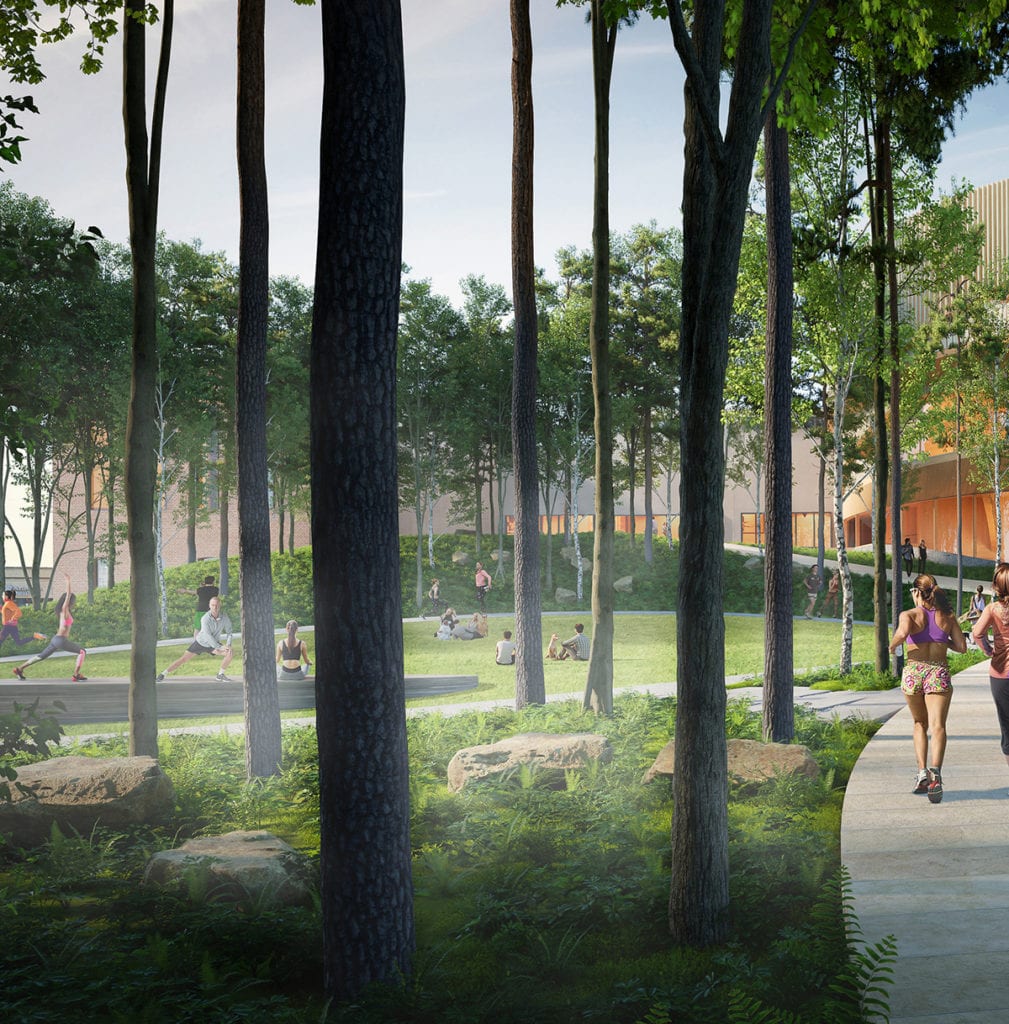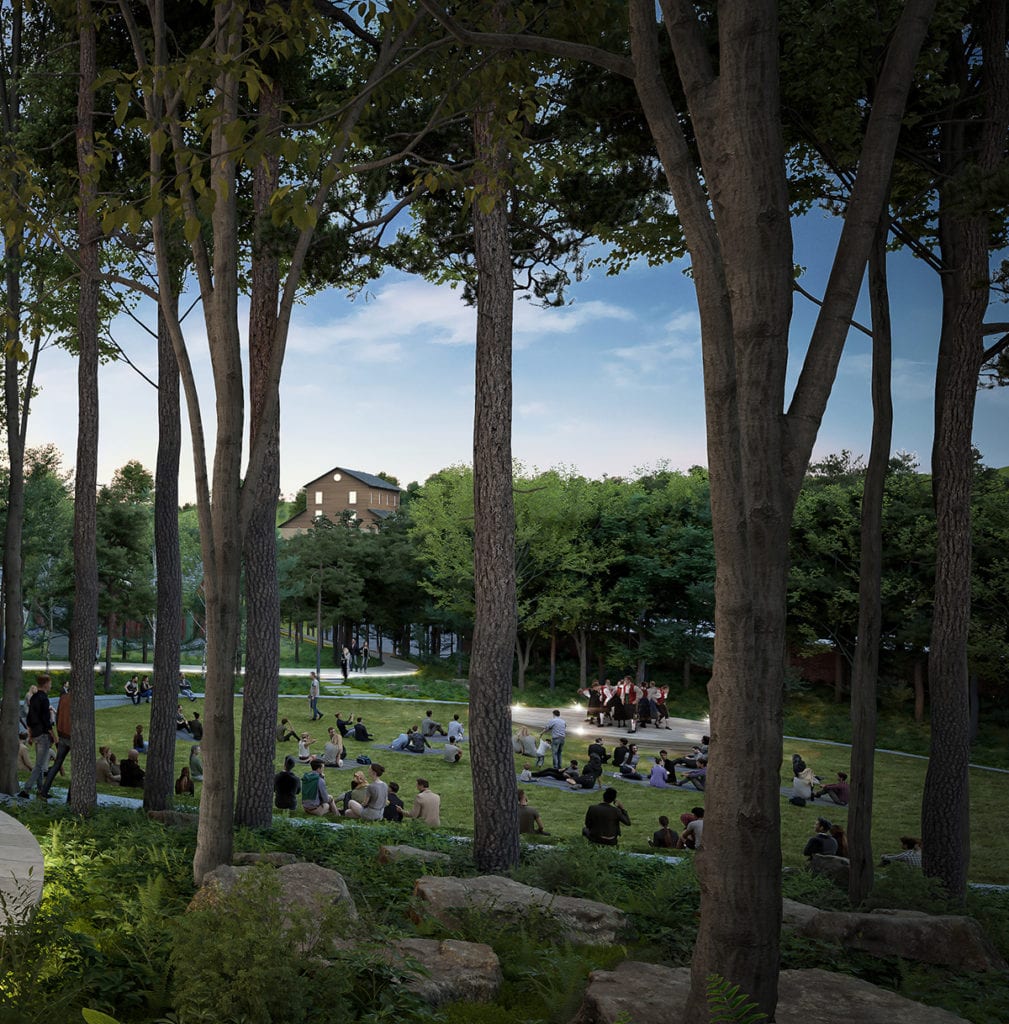Architectural renderings courtesy of Snøhetta.


Vesterheim announces plans for the transformation of its Open Air Division into Vesterheim Heritage Park—an exciting project that will value the community and the environment. This educational, interpretative, and public outdoor space is designed by Damon Farber, the award-winning landscape architectural firm from Minneapolis, MN, and Snøhetta, the renowned international architectural firm with offices in New York City and Oslo. Heritage Park is part of an overall Master Site Plan created for Vesterheim by Snøhetta.
“It will not only enhance museum programming, but serve as a welcoming and accessible community gathering space as well,” Chris Johnson, Vesterheim’s President and CEO, said. “The design utilizes a Norwegian forest-and-glade concept, with extensive tree plantings surrounding a scattering of open areas for public gatherings, the interpretation of historic buildings, educational functions, and folk-art classes—there will even be a small amphitheater for performances!”
The pathways will be ADA accessible and landscaping will incorporate many environmentally sensitive elements, thanks to a $100,000 grant from the Iowa Department of Agriculture and Land Stewardship’s Water Quality Initiative (WQI) Urban Conservation Project. Vesterheim worked with Amy Bouska, Eastern Iowa’s Urban Conservation Program Coordinator, on the grant.
As the grant outlines, the plans for Heritage Park will implement four primary practices to transform a currently underutilized, traditional mowed lawn into a densely planted, tree-covered landscape with features that improve infiltration, reduce nutrient and sediment runoff, and demonstrate sustainable stormwater management. These practices include soil quality restoration, native landscaping, a bioretention cell, and permeable pavers. Through successful implementation and maintenance, these practices demonstrate the importance of reducing negative impacts contributing to the impaired water conditions of the nearby Upper Iowa River.
“In our Master Planning process, we are making a shift toward sustainability and this is an early step in that direction,” Chris Johnson added. “The Heritage Park plan recognizes our relationship to the Upper Iowa River, which historically used to run next to our property, and our continuing responsibility toward it.”
Categories
- Folk Art Connections (118)
- Making a Difference (33)
- Vesterheim News (143)
- Vesterheim Stories (56)
